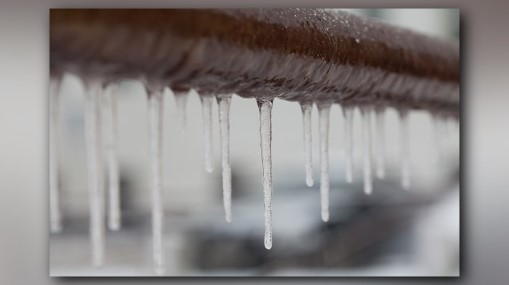Just how do you really feel in relation to Winter Plumbing Precautions: Preventing Frozen Pipes?
:strip_icc()/snow-outdoor-faucet-pipes-4af65d1e5e904fb1aa7bf74071fe5d89.jpg)
Cold weather can wreak havoc on your plumbing, especially by freezing pipelines. Below's how to stop it from taking place and what to do if it does.
Introduction
As temperatures decrease, the danger of frozen pipelines rises, potentially bring about pricey repair work and water damage. Comprehending how to stop icy pipelines is important for house owners in cool climates.
Recognizing Frozen Pipelines
What causes pipes to ice up?
Pipelines ice up when exposed to temperature levels below 32 ° F (0 ° C) for extended periods. As water inside the pipelines ices up, it broadens, taxing the pipe wall surfaces and possibly causing them to break.
Threats and problems
Icy pipelines can bring about supply of water disruptions, residential or commercial property damage, and pricey repair work. Burst pipes can flooding homes and create extensive architectural damage.
Signs of Frozen Pipeline
Determining frozen pipes early can prevent them from breaking.
Just how to determine frozen pipes
Search for reduced water flow from faucets, unusual smells or noises from pipes, and visible frost on exposed pipelines.
Prevention Tips
Protecting prone pipelines
Cover pipelines in insulation sleeves or use heat tape to safeguard them from freezing temperatures. Focus on pipelines in unheated or external areas of the home.
Home heating strategies
Maintain indoor rooms properly heated, specifically locations with pipes. Open up cupboard doors to permit cozy air to distribute around pipes under sinks.
Safeguarding Outside Pipes
Yard hose pipes and exterior taps
Detach and drain pipes garden tubes before winter season. Mount frost-proof spigots or cover outdoor faucets with protected caps.
What to Do If Your Pipelines Freeze
Immediate actions to take
If you think icy pipelines, keep faucets available to relieve pressure as the ice thaws. Utilize a hairdryer or towels soaked in warm water to thaw pipes gradually.
Long-Term Solutions
Structural modifications
Consider rerouting pipelines far from exterior walls or unheated locations. Add extra insulation to attic rooms, basements, and crawl spaces.
Upgrading insulation
Invest in high-quality insulation for pipelines, attic rooms, and wall surfaces. Appropriate insulation aids keep constant temperatures and minimizes the danger of frozen pipes.
Verdict
Protecting against icy pipes calls for proactive steps and fast feedbacks. By comprehending the reasons, signs, and safety nets, property owners can shield their plumbing throughout winter.
5 Ways to Prevent Frozen Pipes
Drain Outdoor Faucets and Disconnect Hoses
First, close the shut-off valve that controls the flow of water in the pipe to your outdoor faucet. Then, head outside to disconnect and drain your hose and open the outdoor faucet to allow the water to completely drain out of the line. Turn off the faucet when done. Finally, head back to the shut-off valve and drain the remaining water inside the pipe into a bucket or container. Additionally, if you have a home irrigation system, you should consider hiring an expert to clear the system of water each year.
Insulate Pipes
One of the best and most cost-effective methods for preventing frozen water pipes is to wrap your pipes with insulation. This is especially important for areas in your home that aren’t exposed to heat, such as an attic. We suggest using foam sleeves, which can typically be found at your local hardware store.
Keep Heat Running at 65
Your pipes are located inside your walls, and the temperature there is much colder than the rest of the house. To prevent your pipes from freezing, The Insurance Information Institute suggests that you keep your home heated to at least 65 degrees, even when traveling. You may want to invest in smart devices that can keep an eye on the temperature in your home while you’re away.
Leave Water Dripping
Moving water — even a small trickle — can prevent ice from forming inside your pipes. When freezing temps are imminent, start a drip of water from all faucets that serve exposed pipes. Leaving a few faucets running will also help relieve pressure inside the pipes and help prevent a rupture if the water inside freezes.
Open Cupboard Doors
Warm your kitchen and bathroom pipes by opening cupboards and vanities. You should also leave your interior doors ajar to help warm air circulate evenly throughout your home.

I was shown that article about Prevent Frozen Pipes through a good friend on a different web blog. Kindly take the opportunity to promote this page if you liked it. Thank you for your time invested reading it.
This Website